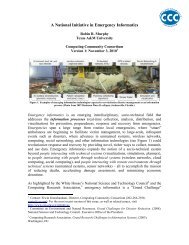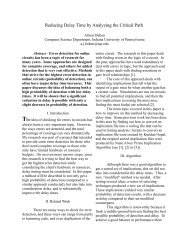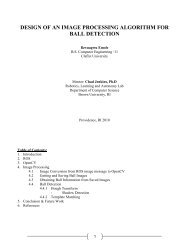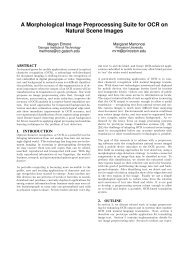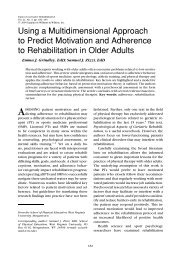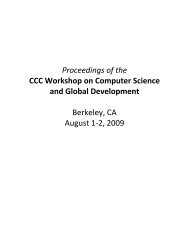High Performance Microchip Supply - Under Secretary of Defense ...
High Performance Microchip Supply - Under Secretary of Defense ...
High Performance Microchip Supply - Under Secretary of Defense ...
You also want an ePaper? Increase the reach of your titles
YUMPU automatically turns print PDFs into web optimized ePapers that Google loves.
FUTURE TECHNOLOGY DEVELOPMENT ________________________________________________<br />
industry and the nation as a whole, is that no effective leadership<br />
structure has been substituted. Instead, research in these fields is<br />
managed through a hodge-podge <strong>of</strong> programs spawning numerous<br />
government agencies. The President’s budget includes “cross-cuts” <strong>of</strong><br />
the government’s Nanotechnology (the NNI) and IT (the NITRD)<br />
research investments, each <strong>of</strong> which is stitched together by<br />
committees representing the participating agencies. However, there is<br />
no unified source <strong>of</strong> leadership that can mount revolutionary<br />
programs, let alone ensure that the DOD’s future requirements for<br />
programmable microchips will be met.<br />
While it is tempting to believe that the future capabilities DOD<br />
will require will emerge solely from the private sector, most<br />
commercial entities can only engage in relatively short-term<br />
incremental R&D on their own. Although the industry has pooled its<br />
resources to support a limited degree <strong>of</strong> long-term university<br />
research (e.g., through the SRC), this is far from sufficient to meet<br />
DOD’s needs. Similarly, it may be tempting to believe that NSF<br />
funding will be sufficient to sustain information superiority.<br />
Although NSF funding has risen and the NSF does fund more longer<br />
term incremental work than industry, the NSF does not typically<br />
support development <strong>of</strong> revolutionary capabilities, along the lines <strong>of</strong><br />
those achieved by DARPA’s 6.2 programs.<br />
university sector well informed <strong>of</strong> defense issues and the university researchers acted<br />
as useful “prods” to the defense contractors, making it impossible for them to dismiss<br />
revolutionary concepts whose feasibility was demonstrated by university-based 6.2<br />
efforts that produced convincing “pro<strong>of</strong> <strong>of</strong> concept” prototypes. As EECS grew in scale<br />
and its scope extended beyond DOD applications, a “success disaster” ensued in that<br />
EECS essentially “outgrew” the ability <strong>of</strong> the DOD to be its primary source <strong>of</strong><br />
directional influence, let alone funding. Furthermore, DOD never developed a strategy<br />
to deal with this transition. With pressures to fund developments are unique to the<br />
<strong>Defense</strong> (e.g., military aircraft, tanks, artillery, etc.), the DOD withdrew its EECS<br />
research leadership. Recently, DARPA has further limited university participation,<br />
especially as prime contractors, in its Computer Science 6.2 programs, which were by<br />
far its most significant investments in university research (vastly outstripping 6.1<br />
funding). These limitations have come in a number <strong>of</strong> ways, including non-fiscal<br />
limitations, such as the classification <strong>of</strong> work in areas that were previously unclassified,<br />
precluding university submission as prime contractors on certain solicitations, and<br />
reducing the periods <strong>of</strong> performance to 18-24 months.<br />
88 _________________________________________________________ DSB TASK FORCE ON




